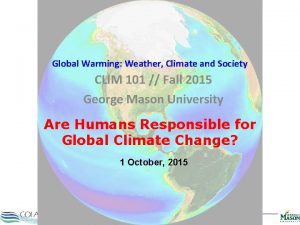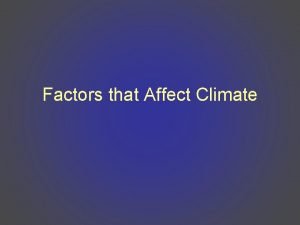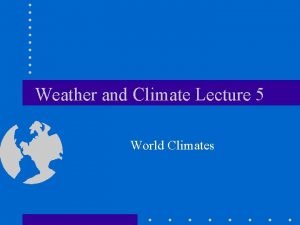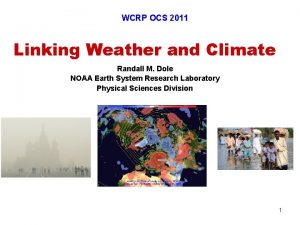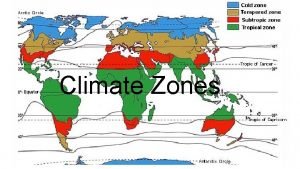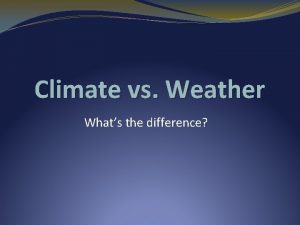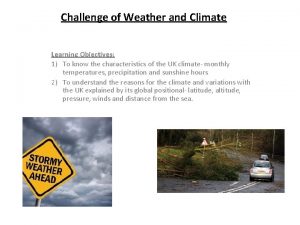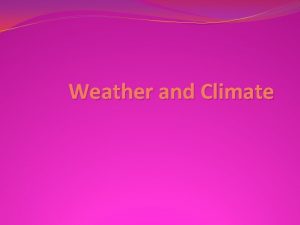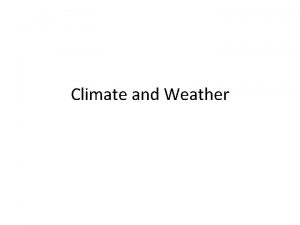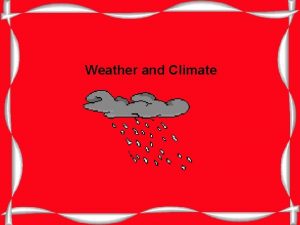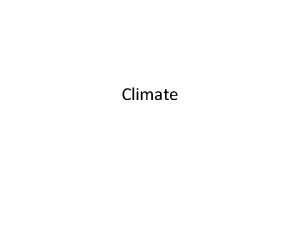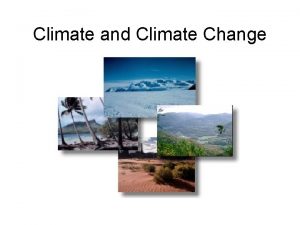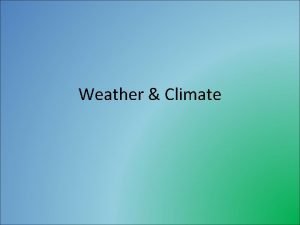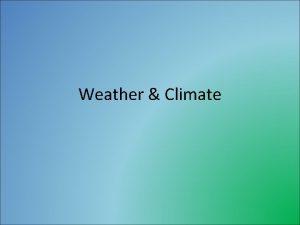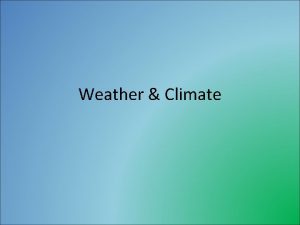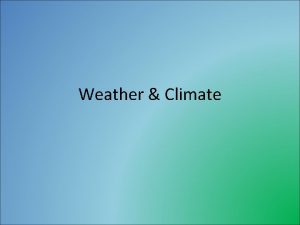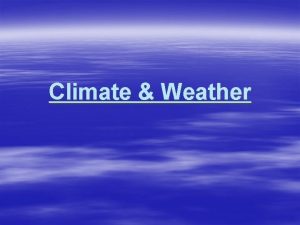g Weather Condition Weather and Climate Click the













- Slides: 13

g Weather Condition

Weather and Climate Click the photo below to get acquainted with weather and climate.

Climate • Climate is the average weather over time in a certain area. • The Earth has six climate zones. The imaginary horizontal line that runs through the middle of the Earth is called the Equator. This area gets the most direct sunlight. • The hottest temperatures occur on either side of the equator. We live in one of the temperate zones, where the weather is not too hot, not too cold.

Weather • Weather is the state of the atmosphere (gases surrounding the earth) at any point in time in a certain place. • The weather can change from day to day. • A meteorologist is a scientist who studies weather.

Factors/Elements of Weather • There are several conditions that can be measured or observed to help meteorologists understand predict the weather. • These factors include temperature, precipitation, wind, air pressure, clouds and fog, and humidity.

Temperature • Temperature is the measure of how warm the air is. • To measure the temperature, we use a thermometer. In the United States, we use Fahrenheit ( F) to measure temperature, but another unit if temperature is Celsius ( C).

Precipitation • Precipitation is water that falls from the atmosphere. • This water can be in the form of rain, snow, sleet, or hail. • A rain gauge can be used to measure precipitation. It looks like a cylinder with an open top and a ruler printed on the side.

Clouds and Fog • Clouds are masses of water vapor. Fog occurs when a cloud is at or near ground level. • Clouds are observed. Observing what types of clouds are in the sky can help you predict what type or weather might be coming.

Clouds and Precipitation • Click the picture below to learn more about clouds and precipitation.

Wind • Wind is moving air. We measure wind speed (how fast the wind is blowing) and wind direction (what direction the wind is coming from). • A wind vane is used to measure wind direction. An anemometer measures wind speed. Anemometer Wind Vane

Air Pressure • Air pressure is the weight of the atmosphere pressing at a certain place. It changes when air particles move farther apart (low pressure) and closer together (high pressure). • Change in air pressure = change in weather • High pressure usually means fair weather and low pressure usually means rainy or stormy weather. Air Pressure is measured with a barometer

Air Pressure and Wind • Changes in air pressure can affect the strength of the wind’s gusts. Click the picture below to learn more about air pressure and wind. Be sure to take notes on important facts.

Humidity • Humidity is the amount of water vapor in the air. • High humidity feels sticky and wet. Low humidity is dry and more comfortable. • Humidity is reported in a percentage, and is measured with a hygrometer.
 Safety click
Safety click Click clever click safe
Click clever click safe Clever click
Clever click Click clever click safe
Click clever click safe Gd & t full form
Gd & t full form Climate change 2014 mitigation of climate change
Climate change 2014 mitigation of climate change World geography chapter 3 weather and climate
World geography chapter 3 weather and climate Weather climate and society
Weather climate and society How does wind affect weather and climate
How does wind affect weather and climate Cimates
Cimates Conclusion of weather and climate
Conclusion of weather and climate 12 climate zones map
12 climate zones map Whats the difference between weather and climate
Whats the difference between weather and climate Objectives of weather and climate
Objectives of weather and climate







